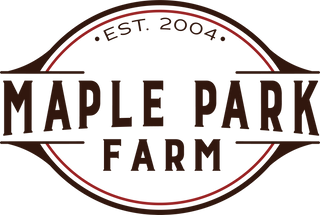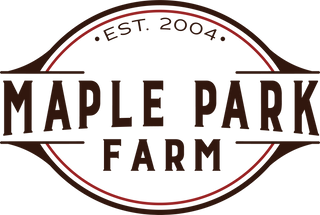We will expand on key questions to consider when designing your garden space and offer tips to help you along the way.
Are you designing a functional garden (e.g., food production), an aesthetic one (e.g., decorative flowers), or a mix of both?
Reflection: Your garden should align with your goals and priorities. Do you value the satisfaction of growing fresh, homegrown food? Or do you dream of creating a serene retreat filled with vibrant blooms and lush greenery? Perhaps you would like a garden that combines both—a productive space that is also visually stunning.
Tips:
-
Functional Garden:
- Start with a clear layout to maximize efficiency. Group plants with similar needs together to simplify watering, fertilizing, and pest control.
- Consider traditional in-ground beds for larger crops like corn or squash, or consider using raised beds if you want easier maintenance.
- Incorporate vertical gardening techniques, like trellises for beans or cucumbers, to save space.
-
Aesthetic Garden:
- For visual interest, combine plants of varying heights, colours, and textures. For example, pair tall grasses or delphiniums with mid-height blooms and low-growing ground covers.
- Research plant habits and bloom times to keep your garden vibrant throughout the season and ensure something is always blooming.
- Use pathways, garden ornaments, or water features to enhance the design and create focal points.
-
Dual-Purpose Garden:
- Incorporate plants that are both beautiful and functional. For instance, edible flowers like nasturtiums or calendula add colour while being useful in the kitchen. Herbs like thyme, basil, or dill provide fragrance and culinary value while attracting pollinators. Sunflowers offer beautiful blooms, and edible seeds and attract pollinators.
- Design mixed beds that combine vegetables and flowers. Companion plants like marigolds can help deter pests while adding beauty.
Are there new plants or techniques you would like to try this year?
Reflection: Gardening is a journey of continuous discovery--no two seasons are ever the same. Think back on past years; is there a crop, flower, or variety you have always dreamed of growing but have not tried yet? Or you may be curious about experimenting with companion planting to maximize space and deter pests, or sustainable methods such as no-dig gardening to improve soil health.
Tips:
-
Start Small:
- If you are trying something new, begin with a small section of your garden rather than making sweeping changes. This approach allows you to observe and learn without feeling overwhelmed.
-
Seek Inspiration:
- Attend our gardening workshops, take pictures of flowers you enjoy on your walks, and research whether they would be a good fit for your garden. These steps can help you stay motivated and informed while encouraging creativity.
-
Experiment with Varieties:
-
Look for unique or heirloom varieties of plants that add diversity to your garden. For example, try growing purple carrots, striped tomatoes, or exotic flowers like dahlias in new and unexpected shades.
-
Look for unique or heirloom varieties of plants that add diversity to your garden. For example, try growing purple carrots, striped tomatoes, or exotic flowers like dahlias in new and unexpected shades.
-
Start with your favourites:
- Choose vegetables that your family already enjoys and that you are excited to grow. This will make the experience more rewarding and ensure your harvest is not wasted.
- For Flowers, choose varieties with characteristics that are most important to you. Do you want prolific bloomers, drought tolerant, deer resistant?
-
Document Your Experience:
-
Keep a gardening journal to track your successes and challenges with new plants or techniques. Documenting your experience will help refine your approach and build on your knowledge in future seasons.
-
Keep a gardening journal to track your successes and challenges with new plants or techniques. Documenting your experience will help refine your approach and build on your knowledge in future seasons.
Are you building toward a long-term dream, like a perennial garden or a food forest?
Reflection: Gardens can be part of a bigger vision, transforming your space into a haven that grows more beautiful and productive each year. If you dream of a thriving perennial garden or a lush food forest, each season’s plan should take thoughtful steps toward that goal. Reflect on how this year’s efforts can contribute to your long-term vision.
Tips:
-
Start with Soil Health:
-
For perennial gardens, prioritize improving soil health in the early years. Healthy soil will provide a strong foundation for plants to thrive long-term. Start with hardy, easy-to-establish perennials.
-
For perennial gardens, prioritize improving soil health in the early years. Healthy soil will provide a strong foundation for plants to thrive long-term. Start with hardy, easy-to-establish perennials.
-
Layer Your Food Forest:
- When building a food forest, begin with canopy plants like fruit trees. Once those are established, introduce understory plants (e.g., berry bushes or shrubs), and finish with ground covers, herbs, and climbers to create a thriving, layered ecosystem.
-
Be Patient and Flexible:
- Long-term projects like these take time to develop. Enjoy the process, adapt as needed, and celebrate each step forward. The beauty of a perennial garden or food forest lies in its evolution.
🌱 Download our FREE Garden Planner to help organize your ideas and goals as well as track your progress this year.
Let’s make this year one of growth, beauty, and abundance—together.


